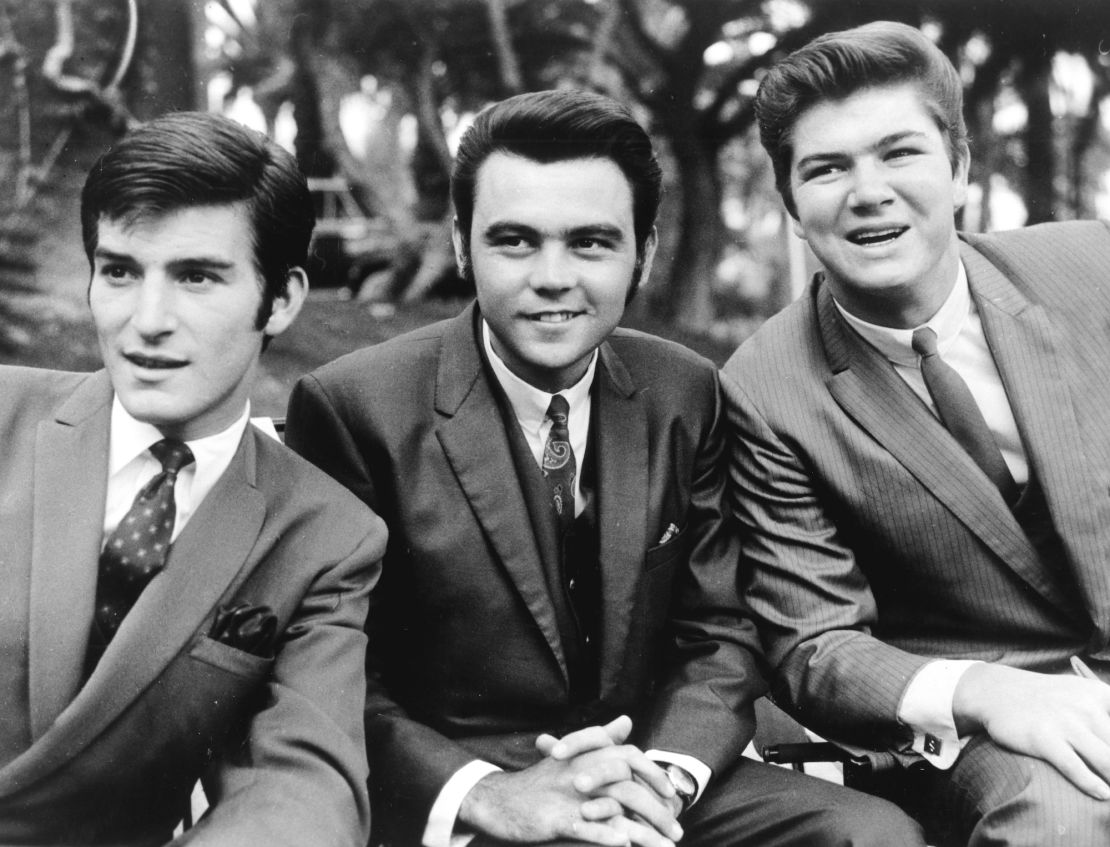Taylor Swift and Beyoncé may have been the pop stars that made the most headlines in 2023. But another major music industry milestone is worth noting.
A record number of Spanish-language songs landed on the Billboard Hot 100 list this year, and a record number also made it into that list’s top 10.
“It’s exciting.… I didn’t think that such a shift was possible,” says Leila Cobo, Billboard’s chief content officer for Latin music.
Not long ago, Latin artists had to make crossover albums in English if they wanted to win over big US audiences.
Now experts say something significant is shifting. And the chart rankings of Spanish-language songs from stars like Bad Bunny, Karol G and Peso Pluma reveal a lot about changes in the music industry — and in the US.
Streaming music has been a game-changer
The first Spanish-language song to make it into the top 10 of Billboard’s Hot 100 chart was a version of the classic Cuban song “Guantanamera” performed by The Sandpipers, an American folk group. It was 1966.

Back then, there were only about 8.5 million Latinos living in the United States. Now, there are nearly 64 million, making up roughly 19% of the total population.
And there are far more Spanish-language songs making it onto the Billboard Hot 100 chart, which uses data from sales, radio and streaming to rank the top songs in the US each week.
This year, a record 98 Spanish-language songs made Billboard’s list, and six made it into the top 10, according to Xander Zellner, a senior charts and data analyst for Billboard who recently analyzed the history of non-English songs on the list.
That’s a huge jump compared to just a few years ago. In 2015, only two Spanish-language songs made the Hot 100, Zellner says.
The rise of streaming music platforms, and their inclusion in Billboard’s calculations, played a big role, Cobo says, and it’s changing the way some see Latin music.
“People act as though Latin music suddenly came into existence five years ago, when no, there’s a thriving Latin music business here that was always vastly undercounted.… Now it’s just impossible to ignore. It’s a major force,” she says.
And Latino audiences aren’t the only ones listening.
Research has shown that members of Gen Z are more open to listening to music in other languages, according to Cobo.
“Younger generations don’t have those issues of — ‘Oh my God, it’s in Spanish!’ They don’t care,” Cobo says. “If it’s good, they like it. If it connects with them, they listen to it.… Music is music.”
The era of ‘crossing over’ may be over. This expert says artists are following a different path
Some of Latin music’s best-known stars have been so-called “crossover artists” who recorded in English to reach wider audiences. Think Ricky Martin’s 1999 hit “Livin’ la Vida Loca” or Shakira’s 2001 song “Whenever, Wherever.”
But another path to stardom has emerged in recent years, according to Christopher J. Westgate, a professor and media scholar at Johnson & Wales University in Rhode Island.
Instead of “crossover,” Westgate says he uses the term “cross under.”
“In the past with crossover artists there was this very calculated industry-led promotion of these (crossover) artists. That was sort of over time, and you could observe it. It was visible. Now, I think it’s more bottom-up as opposed to being top-down,” he says. “Bad Bunny, for instance, got his start from Puerto Rico, bagging groceries, and he was part of the underground music scene and really sort of bubbled up to become the world’s largest pop star.”
“Cross-under” artists, Westgate says, don’t care about the industry pressures that pushed singers previously to record in English.
“Shakira took English-language lessons to perfect her pronunciation in order to cross over, whereas today, Bad Bunny or J Balvin or Rosalia, they don’t care. They’re recording in Spanish, and they’re doing incredibly well and so successful.”
Or, as Bad Bunny himself put it in an interview with Trevor Noah several years ago: “Why do I have to change? No one has (told) a gringo artist that you have to change. This is who I am. This is my music. This is my culture. If you don’t like it, don’t listen to me. If you like it, you know.”
Latin artists are leaning into collaborations and authenticity
José Valentino Ruiz, an assistant professor in the School of Music at the University of Florida and a four-time Latin Grammy award winner for solo and collaborative work, also sees another factor playing into the rise of Latin music.
“The Latin music industry is more connected and more accessible to collaborate than the red tape that exists with other genres,” he says. “Most Latin American artists are actually independent, so they have free reign as to who they want to create with.”
The collaborations have brought Latin music to wider audiences who might not otherwise encounter it, he says.

And Ruiz says Latin artists’ authenticity is also resonating with audiences.
“They are not afraid to say, ‘hey everybody, I’m waking up right now,’ showing themselves in pajamas, showing themselves taking a walk — being vulnerable as a human, as opposed to being plastic,” he says.
Regional Mexican music has surged into the spotlight
Bad Bunny’s prolific catalogue and his talent for genre-bending hits that mix trap, reggaeton and rock influences have been landing the Puerto Rican musician on Billboard’s charts for several years. And his songs make up 27 of the Spanish-language titles that made the Hot 100 list in 2023. But this year, musicians from an entirely different genre are joining him in the spotlight.
The audience for what’s known as “Regional Mexican music” is growing rapidly, according to Billboard.
The umbrella term is used by the music industry to describe the ballads, corridos and mariachi songs with roots in communities on both sides of the US-Mexico border.
And this year, 37 songs in that genre made the Hot 100 chart, Zellner says, compared to two in 2022 and four in 2021. Before that year, regional Mexican songs had never made the list.

Peso Pluma, whose collaboration with Eslabón Armado, “Ella Baila Sola” made it to the top 10 list on the Hot 100 chart, became the first regional Mexican artist to perform on NBC’s “The Tonight Show” when he took the stage in April.
He also performed at Coachella and drew sold-out crowds for his US tour. Of the 98 Spanish-language songs that made the Hot 100 this year, 22 were by the Mexican artist.
Westgate says the music resonates with audiences not just because of its style, but the message behind it.
“I think now we’re seeing this sort of desire to get back to the roots of music. And you know this regional Mexican (music) is all about authenticity,” he says. “It’s all about connection to the land. It’s all about the plight of the immigrant. It’s all about, you know, drug lords… immigration… And I think it’s a vehicle, it’s a voice for hurt, for difficulty, for loss, but also for love, and also for hope.”
Young Latinos see music as a way to connect with their roots
The rise in popularity of Spanish-language music comes at a time when many Latino youth are looking to reconnect with their roots.
“A lot of people would come here and would say their parents would stop teaching them Spanish because they wanted their kids to be fully American. And I think for a while, that heritage was forgotten,” Cobo says.
Spanish-language music has become a way for younger generations to connect with that heritage, she says.
“There’s more pride in the culture,” Cobo says. “So even if they don’t speak the language, they continue to listen to the music.”
Landing on a Billboard chart isn’t just a marker of how popular music is. It also adds major momentum to artists’ trajectories, Westgate says. And given how many Spanish songs soared onto the charts this year, he says we’re likely to see an even stronger showing in the future.
But Westgate says there’s still room for growth.
“If we look into the next decade, my hope is… that more collaboration will allow even newer styles and genres to emerge,” he says.
CNN’s Harmeet Kaur contributed to this report.







